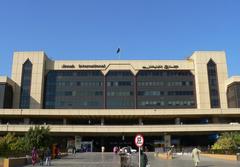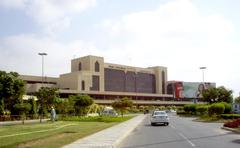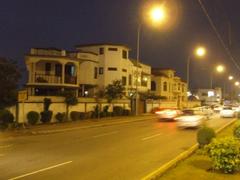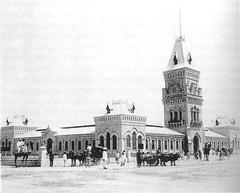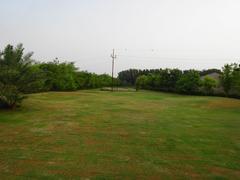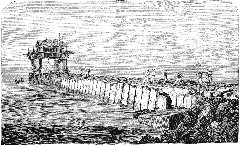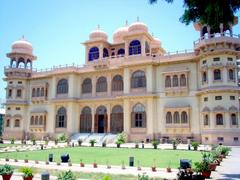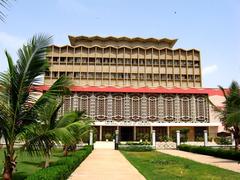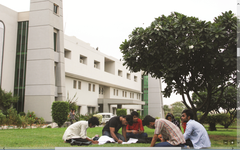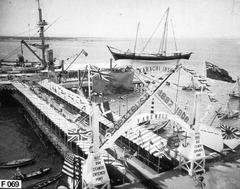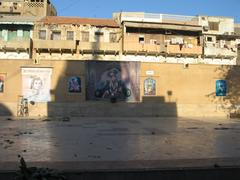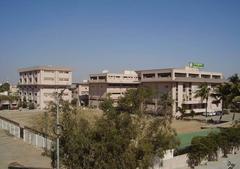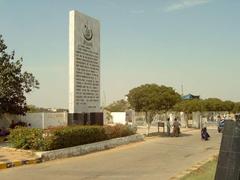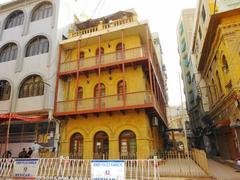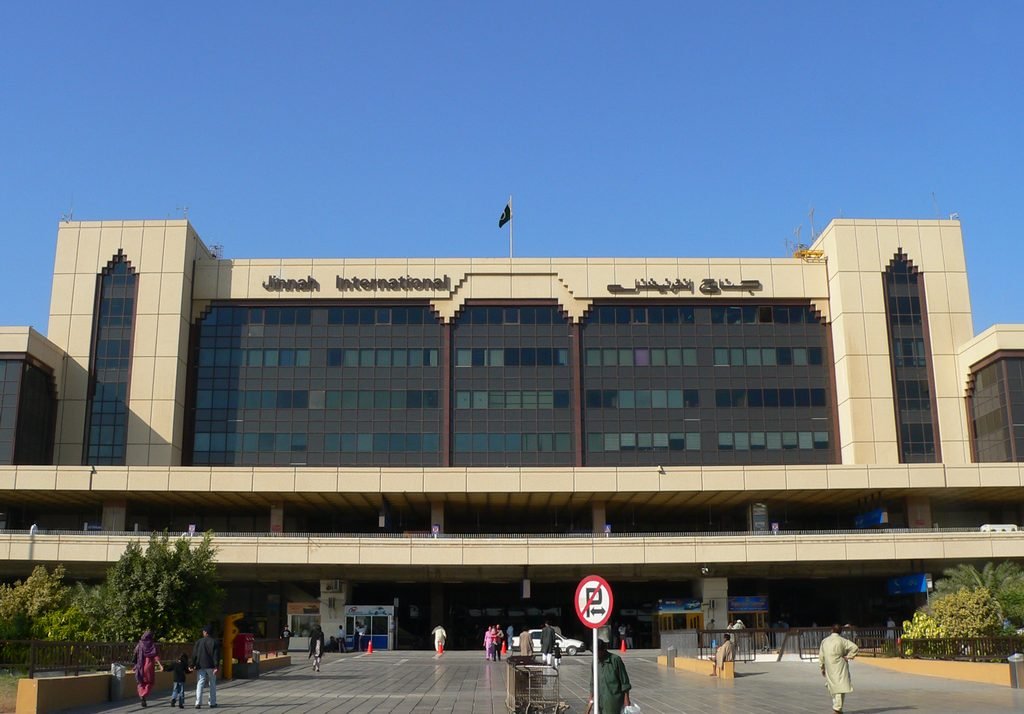
Jinnah International Airport Karachi Visiting Guide: Tickets and Travel Tips
Date: 14/06/2025
Introduction
Jinnah International Airport Karachi is Pakistan’s largest and busiest aviation gateway, serving as the main entry point not only to Karachi but the entire country. Established in the 1920s during British colonial rule, the airport has evolved from a strategic refueling stop on transcontinental routes to a modern facility handling over 12 million passengers annually. Named in honor of Muhammad Ali Jinnah, the founder of Pakistan, the airport now comprises multiple terminals supporting domestic, international, VIP, Hajj, and cargo operations. Its blend of historical significance and contemporary amenities ensures comfort, efficiency, and accessibility for all travelers.
This detailed guide provides essential information for visitors, including airport history, operating hours, ticketing procedures, traveler facilities, and practical tips. Whether you’re visiting Karachi for business, leisure, or pilgrimage, understanding the airport’s layout, services, and proximity to city attractions such as Clifton Beach and the Pakistan Air Force Museum can enrich your experience. The guide also covers transport options, security protocols, and accessibility, empowering all travelers to navigate the airport with ease.
For those wishing to explore Karachi’s cultural heritage, this resource highlights connections to landmarks like the Quaid-e-Azam Mausoleum. To stay updated, travelers are encouraged to use digital tools such as the Audiala app for real-time information and assistance.
Explore Jinnah International Airport Karachi with confidence and discover the seamless integration of Pakistan’s aviation tradition and modern infrastructure. (Pakistan Civil Aviation Authority, Tourism Pakistan)
Table of Contents
- Historical Development of Jinnah International Airport
- Visiting Hours and Ticketing Information
- Essential Visitor Tips
- Frequently Asked Questions (FAQs)
- Visuals and Additional Resources
- Related Attractions
- Conclusion
Historical Development of Jinnah International Airport
Jinnah International Airport’s roots stretch back to the 1920s, when Karachi was a vital port city under British colonial administration. Initially, the airport served as a refueling station for Imperial Airways and the British Royal Air Force on the London-to-Sydney route. By the 1940s, it had developed into a major aviation link between Europe, the Middle East, and Asia.
Following Pakistan’s independence in 1947, the airport was renamed after Muhammad Ali Jinnah. Modernization accelerated during the 1960s and 1970s with the construction of new terminals and runways, strengthening Karachi’s role as the hub for Pakistan International Airlines (PIA). The 1990s saw the opening of the current terminal complex, consolidating domestic and international operations and introducing contemporary amenities. Today, the airport operates four terminals: Jinnah Terminal (domestic and international), Quaid-e-Azam Terminal (VIP and Hajj), Domestic Terminal, and Cargo Terminal.
Visiting Hours and Ticketing Information
Operating Hours:
Jinnah International Airport is open 24 hours a day, seven days a week. However, certain services have designated hours:
- Airport Lounges: Generally open from early morning to late evening, such as the Askari Lounge (5:00 AM–11:00 PM).
- Ticket Counters: Most airline counters open 3 hours before departure and close 1 hour after the last flight.
- Shops and Eateries: Public areas are accessible throughout airport operational hours, but individual outlets may vary.
Ticketing for Airport Services:
- Lounge Access: Purchase on-site or online (~3,000 PKR).
- Left Luggage: Available at approximately 500 PKR per bag.
- Hajj Flights: Special ticketing coordinated through authorized agencies and PIA.
Essential Visitor Tips
Arrival and Immigration
International arrivals can expect an efficient immigration process, typically taking 45 minutes. During peak hours, allow extra time. Enhanced signage and a visible tourist police presence improve safety and guidance.
Airport Facilities and Services
- Left Luggage: Secure storage for short-term needs.
- Lounges: Comfortable seating, Wi-Fi, refreshments; pay-per-use and select credit card access.
- Currency Exchange/ATMs: Available in arrivals and departures.
- Food and Shopping: Local and international outlets, duty-free shops, and souvenir stores.
Transportation and Transfers
Official taxi stands and ride-hailing services (Careem, Uber) offer reliable transport. Prepaid taxi counters help avoid overcharging; fares to central Karachi (Clifton, Defence) range from 1,000–2,000 PKR.
Security and Safety
Security is robust, with multiple checkpoints and baggage screenings. International travelers should arrive at least three hours prior to departure to accommodate these procedures.
Accessibility and Special Assistance
Facilities include ramps, elevators, tactile guidance, and wheelchair services. Request assistance in advance through your airline or at information desks if needed.
Connectivity and Local Exploration
Layover passengers can use left luggage services to visit nearby sights—Clifton Beach, Pakistan Air Force Museum, and the National Museum of Pakistan. Taxis and ride-hailing apps are recommended for city transfers.
Departure Considerations
Plan to return to the airport well before your flight to account for traffic and security. Departure lounges offer comfortable waiting, shopping, and dining options.
Practical Tips
- Recommended areas for accommodation: Clifton and Defence.
- Monitor flight status via official airport or airline websites.
- Local SIM cards are available at arrival kiosks for easy connectivity.
Frequently Asked Questions (FAQs)
Q: What are the airport’s visiting hours?
A: The airport is open 24/7; lounge and shop hours vary.
Q: How can I access airport lounges or services?
A: Lounge access can be purchased on-site or online; other services such as left luggage are available at designated counters.
Q: Is public transport available to city center?
A: Public buses are limited; taxis and ride-hailing apps are the most reliable.
Q: Are guided tours available at the airport?
A: The airport does not offer guided tours, but nearby museums and sites do.
Q: How can I request special assistance?
A: Contact your airline in advance or visit an information desk upon arrival.
Visuals and Additional Resources
High-quality images, virtual tours, and maps of Jinnah International Airport are available on the Pakistan Civil Aviation Authority website and other tourism portals, helping visitors familiarize themselves before arrival.
Related Attractions
Consider extending your visit to explore Karachi’s renowned cultural sites:
- Quaid-e-Azam Mausoleum: The final resting place of Muhammad Ali Jinnah and a symbol of national pride (Quaid-e-Azam Mausoleum Official Site).
- Mohatta Palace: A historic home-turned-museum reflecting the city’s rich cultural tapestry.
- Clifton Beach: A vibrant seaside promenade.
- Pakistan Air Force Museum: Exhibits on aviation history.
Conclusion
Jinnah International Airport Karachi is more than a transit point—it’s a testament to Pakistan’s aviation heritage and modern progress. Its strategic role, extensive facilities, and proximity to major attractions make it an ideal starting point for exploring Karachi. By staying informed and planning ahead, every traveler can enjoy a seamless and enriching experience.
For real-time updates, travel assistance, and exclusive content, download the Audiala app and follow us on social media.
Quaid-e-Azam Mausoleum: Visiting Hours, Tickets, and Historical Significance
Introduction
The Quaid-e-Azam Mausoleum (Mazar-e-Quaid) in Karachi is an iconic monument and the final resting place of Muhammad Ali Jinnah, the founder of Pakistan. This national symbol embodies the country’s aspirations and historical heritage. This section provides comprehensive information on visiting hours, ticketing, historical background, travel tips, and accessibility for maximizing your visit.
History and Cultural Significance
Constructed from 1948 to 1970, the mausoleum was designed by architect Yahya Merchant in a blend of modern and traditional styles. The white marble structure, surrounded by lush gardens, serves as a focal point for national events and reflects Jinnah’s enduring legacy.
Visiting Hours and Ticket Information
- Hours: Open daily, 9:00 AM–5:00 PM.
- Tickets: Entrance is free for all visitors.
- Best time to visit: Early morning or late afternoon for fewer crowds and cooler weather.
Guided Tours and Educational Programs
Guided tours, provided by local agencies, offer in-depth insights into Jinnah’s life and the mausoleum’s significance. Educational programs and exhibitions are held, especially during national holidays.
Architectural Highlights and Photography
The mausoleum’s cubic structure, crowned by a dome and framed by four minarets, is striking against Karachi’s skyline. The white marble contrasts beautifully with the gardens—ideal for photography, especially at sunrise and sunset.
Accessibility and Facilities
- Wheelchair access with ramps and available assistance
- On-site prayer rooms, clean restrooms, a small museum, and souvenir shops
- Ample parking with clear signage
Location and Transportation
Located in central Karachi, the mausoleum is easily reached by taxi, ride-hailing services, or public transport. Its proximity to the Karachi Zoo and Frere Hall allows for convenient combined visits.
Visitor Tips
- Dress modestly and respectfully.
- Photography is permitted but avoid flash inside the tomb chamber.
- Bring water and sunscreen during summer.
- Check official channels for special events or closures.
Additional Resources
Virtual tours, interactive maps, and high-resolution images are available on the Quaid-e-Azam Mausoleum Official Site.
Frequently Asked Questions (FAQ)
Q: Is there an entrance fee?
A: No, entrance is free.
Q: Are guided tours available?
A: Yes, through local operators.
Q: What are the hours?
A: 9:00 AM to 5:00 PM daily.
Q: Is the mausoleum accessible?
A: Yes, wheelchair access and assistance are provided.
Q: Can I take photographs inside?
A: Yes, but flash is not allowed in the tomb chamber.
Conclusion
The Quaid-e-Azam Mausoleum is a must-visit for anyone interested in Pakistan’s history and culture. Plan your visit for a meaningful and memorable experience. For more travel tips and updates on historical sites, download the Audiala app and follow us on social media.
Summary: Key Information for Visiting Jinnah International Airport Karachi
Jinnah International Airport Karachi stands as a historic and dynamic gateway, embodying Pakistan’s aviation progress and cultural legacy. From its colonial origins to its present status as a modern international hub, the airport offers travelers comprehensive services, security, and accessibility. Its strategic location provides easy access to Karachi’s heritage sites, making it an ideal launching point for exploring the city. Travelers are encouraged to utilize official digital resources and apps like Audiala for up-to-date information and a hassle-free journey.
For more details, visit the Pakistan Civil Aviation Authority and Tourism Pakistan websites.
